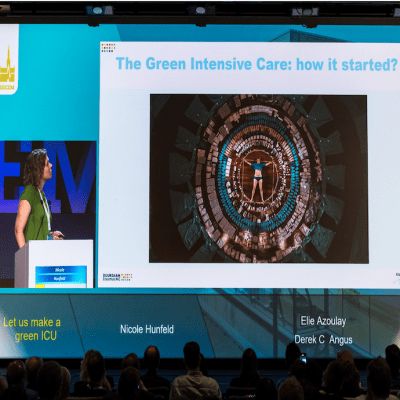When the evidence stacks up that treatments are of no benefit there is a lag in responding to practice-changing evidence, partly because this means admitting we were wrong before.
Follow the evidence. This much is clear, but when the evidence stacks up to say that what doctors are doing is of no benefit and even harmful, there is a lag in responding by changing practice, partly because “this means admitting we were wrong before”, said Hayley B. Gershengorn, MD, Associate Professor of Pulmonary and Critical Care Medicine at the University of Miami, Miller School of Medicine. Gershengorn was speaking at the 38th International Symposium on Intensive Care and Emergency Medicine, held last week in Brussels.
This slow “de-adoption” of practices in the ICU has many examples, explained Gershengorn:
Follow the evidence. This much is clear, but when the evidence stacks up to say that what doctors are doing is of no benefit and even harmful, there is a lag in responding by changing practice, partly because “this means admitting we were wrong before”, said Hayley B. Gershengorn, MD, Associate Professor of Pulmonary and Critical Care Medicine at the University of Miami, Miller School of Medicine. Gershengorn was speaking at the 38th International Symposium on Intensive Care and Emergency Medicine, held last week in Brussels.
This slow “de-adoption” of practices in the ICU has many examples, explained Gershengorn:
- Tight glycaemic control: not only was there slow adoption after one trial found mortality benefit in 2001, but there was slow de-adoption in the USA, for example, when the NICE-SUGAR trial confirmed harm and increased mortality (Niven et al. 2014 )
- High-frequency oscillation in early acute respiratory distress syndrome
- Early goal-directed resuscitation in sepsis
- Low-dose dopamine in patients with early renal dysfunction
- Intraortic balloon support for myocardial infarction in cardiogenic shock
- Pulmonary artery catheters
- Routine daily chest x-ray: in their 2012 systematic review and meta-analysis, Ganapathy et al. (2012) found that a restrictive chest x-ray of a patient receiving mechanical ventilation did not show harm from a restrictive CXR strategy in the ICU. Gershengorn, in her own (unpublished) research found a 3% per quarter de-adoption rate of this practice in the United States, since the American College of Radiology published its appropriateness criteria for routine chest radiographs in ICU patients in 2011, with chest x-rays for stable patients rated as usually not appropriate.
- the process needs repeated effort
- there is no rapid evidence of improvement
- it demands information not immediately available
- contradicts the clinicians’ experience
- prolongs the patient encounter
- appears to inconvenience the patient or
- has insignificant effect on patient.
Latest Articles
When the evidence stacks up that treatments are of no benefit there is a lag in responding to practice-changing evidence, partly because this means admitting we were wrong before.























